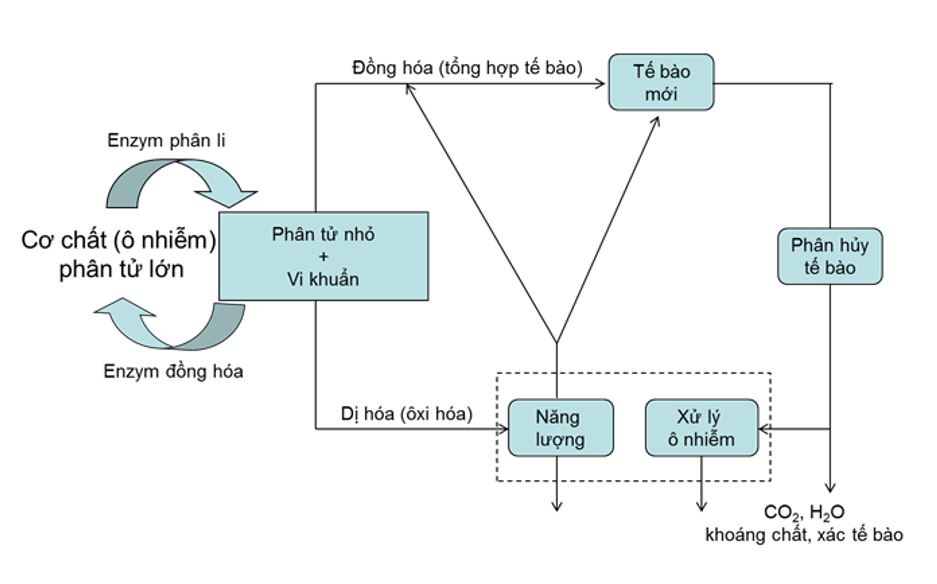The purpose of waste treatment in general and wastewater treatment in particular is to decompose polluting compounds into substances that cause little or no pollution.
In this article we mention the treatment of domestic wastewater using microorganisms
Concept of domestic wastewater treatment using microorganisms
Treatment of domestic wastewater is to treat organic pollution (measured by BOD/COD and N and P compounds. Thanks to their simple structure and ability to reproduce quickly, microorganisms, especially bacteria, are able to handle substances very well. waste of natural origin emitted by humans and animals.
Basic of microbiological process in domestic wastewater treatment
The basis of the treatment process lies in the nature of substrate metabolism and bacterial growth.
To survive and grow, bacteria must carry out two-sided metabolism: anabolism and catabolism.
Bacteria digest water-soluble organic contaminants and colloidal substrates. Oxidizing them creates energy for their activities.
At the same time, biosynthesis regenerates cells to create products such as H2O, CO2 gas and new biomass (sludge).

Microbiological methods in wastewater treatment domestic
The main methods used today are aerobic processes (using aerobic microorganisms) and anaerobic processes (using anaerobic microorganisms).
Domestic wastewater treatment with aerobic microorganisms:
The stage of the aerobic process (oxygen present)
Consists of 3 stages:
-
- Stage 1: Oxidation of organic compounds: CxHyOz + O2 → CO2 +H2O
- Phase 2: Synthesis of new cells: CxHyOz + NH3 + O2 → C5H7 NO2 + CO2 + H2O
- Stage 3: Endogenous decomposition: C5H 7NO2 + 5O2 → 5CO2 + NH3 + 5H2O
Typical technologies domestic wastewater treatment using aerobic microbiology:
-
- SBR technology,
- MBR technology,
- Aerotank technology,…
Aerobic bacteria
-
- Pseudomonads (capable of oxidizing many substrates),
- Alcaligenes and Flavobacterium (decompose proteins),
- The nitrifying bacteria are Nitrosomonas, Nitrosococcus, Nitrosolobus, Nitrosospira, and Nitrosovibrio
Domestic wastewater treatment by anaerobic microorganisms:
The process in anaerobic method
The process takes place in the absence of oxygen. Products CH4 (accounting for about 65%), CO2, H2, N2,…Only applicable to wastewater with high BOD content of 10-30g/l.
The total equation of the anaerobic reaction decomposing organic matter is as follows
CcHhOoNnSs + 1/4( 4c–h–2o+3n+2s)H 2O -> 1/8(4c –h+2o+3n+2s)CO2 + 1/8(4c + h – 2o – 3 n – 2s)CH4 + nNH3 + sH2S
Typical technologies for treating domestic wastewater using anaerobic microorganisms
-
- Septic tank,
- UASB,
- Methane,
- Anammox
Types of bacteria in anaerobic processes
-
- Acetogenic bacteria group (acetogenic bacteria) produces hydrogen or acetate from hydrolysis products,
- Hydrophilic bacteria produce methane.
- In addition to bacteria that produce hydrolysis, acidification, acetate, and methane, depending on environmental conditions, we also encounter sulphate-reducing bacteria.
Choosing a suitable domestic exhaust gas treatment unit that achieves high efficiency and meets output targets is not difficult. Hasy Environment is one of the units that fully meets the most difficult standards set by customers. To understand more details, please contact us for the most detailed advice.


